Cover photo by Gregg Darling.
Find the Friendly Hawker in the FBIS database (Freshwater Biodiversity Information System) here.
Family Aeshnidae
Identification

Seweweekspoort, Western Cape
Photo by Ryan Tippett
Large size
Length up to 62mm; Wingspan reaches 83mm.
The Friendly Hawker is closely similar to the Forest Hawker (Zosteraeschna usambarica), but differs in having an anchor-shaped marking on the forehead and straight, parallel green markings on the shoulders. The Friendly Hawker also has somewhat paler, duller green stripes on the sides of the thorax. These stripes are a brighter shade of green in the Forest Hawker.
The sexes are similar but females either lack the blue saddle or it is very reduced. Females also have amber outer wings.
Click here for more details on identification of the Friendly Hawker.
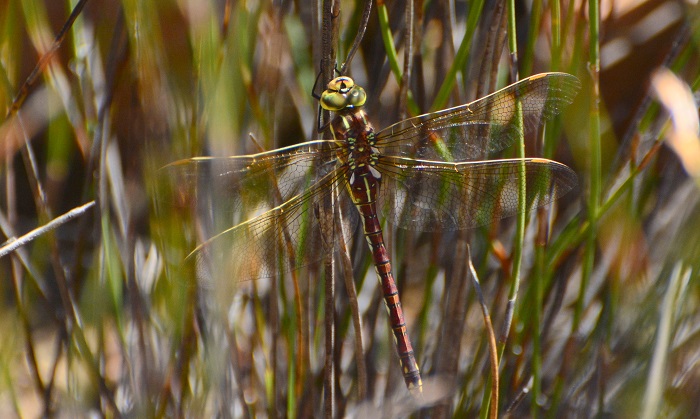
Klein Cedarberg Nature Reserve, Western Cape
Photo by Ryan Tippett
Habitat
Zosteraeschna minuscula inhabits the slow-moving or still sections of rivers, ponds, and dams. The Friendly Hawker is mostly found in open habitats in the grassland and fynbos biomes, and the southern parts of the Karoo. The Friendly Hawker is a mid-to-high-altitude species in the north of its range, but occurs down to near sea level in the Eastern and Western Cape.

Photo by Sharon Stanton
Behaviour
Friendly Hawkers patrol back and forth over the water and vegetated fringes. They are fairly inquisitive (hence the common name) and may approach an observer before moving off again. Individuals can often be seen hovering over one spot before quickly darting off again. The Friendly Hawker spends much of its time on the wing, and the flight is swift and powerful.
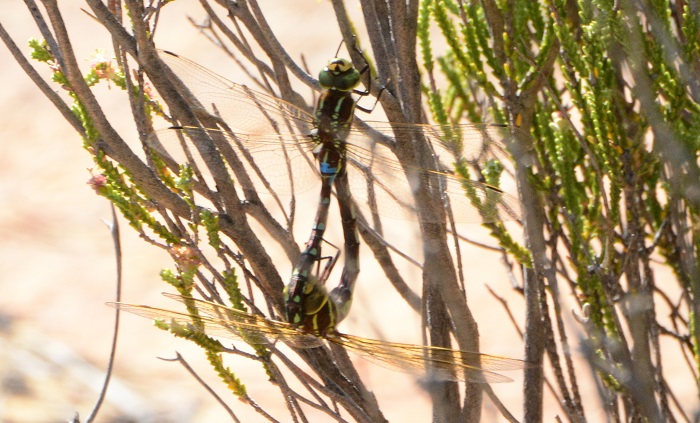
Rietrivier, Western Cape
Photo by Ryan Tippett
Status and Conservation
The Friendly Hawker is fairly common and is listed as of Least Concern in the IUCN Red List of Threatened Species. It is an adaptable species, able to inhabit suitable man-made habitats and somewhat degraded waterbodies.
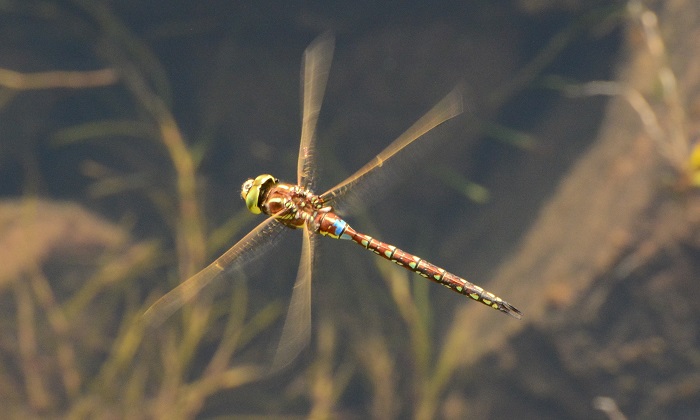
Kogmanskloof River, Montagu, Western Cape
Photo by Ryan Tippett
Distribution
The Friendly Hawker is Near-endemic to South Africa. It occurs in a broad band from the Western Cape northwards to the extreme southern parts of Limpopo. The Friendly Hawker is found, at least marginally, in all South African Provinces. It is also known locally from several sites in Namibia.
Below is a map showing the distribution of records for Friendly Hawker in the OdonataMAP database as at February 2020.

Below is a map showing the distribution of records for Friendly Hawker in the OdonataMAP database as of December 2024.
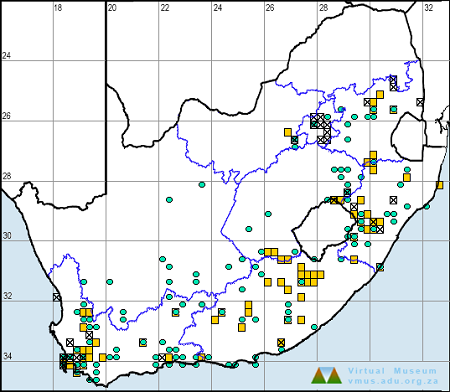
The next map below is an imputed map, produced by an interpolation algorithm, which attempts to generate a full distribution map from the partial information in the map above. This map will be improved by the submission of records to the OdonataMAP section of the Virtual Museum.


Ultimately, we will produce a series of maps for all the odonata species in the region. The current algorithm is a new algorithm. The objective is mainly to produce “smoothed” maps that could go into a field guide for odonata. This basic version of the algorithm (as mapped above) does not make use of “explanatory variables” (e.g. altitude, terrain roughness, presence of freshwater — we will be producing maps that take these variables into account soon). Currently, it only makes use of the OdonataMAP records for the species being mapped, as well as all the other records of all other species. The basic maps are “optimistic” and will generally show ranges to be larger than what they probably are.
These maps use the data in the OdonataMAP section of the Virtual Museum, and also the database assembled by the previous JRS funded project, which was led by Professor Michael Samways and Dr KD Dijkstra.


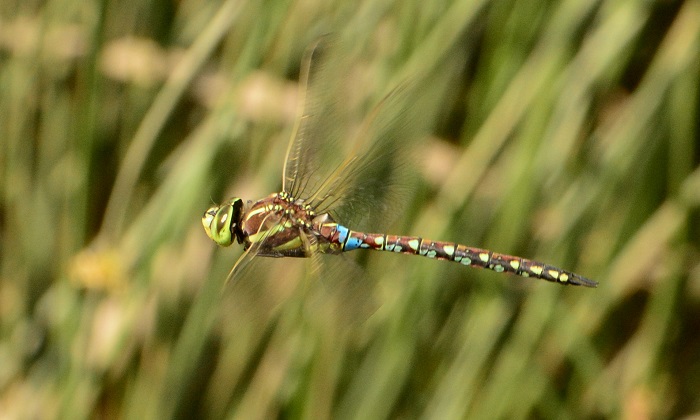
Seweweekspoort, Western Cape
Photo by Ryan Tippett
Further Resources
The use of photographs by Gregg Darling is acknowledged. All other photographs by Ryan Tippett.
Friendly Hawker Zosteraeschna minuscula (MacLachlan, 1896)
Other common names: Vrolike Venter (Afrikaans)
Recommended citation format: Loftie-Eaton M; Navarro R; Tippett RM; Underhill L. 2025. Friendly Hawker Zosteraeschna minuscula. Biodiversity and Development Institute. Available online at https://thebdi.org/2020/05/25/friendly-hawker-zosteraeschna-minuscula/
References: Tarboton, M; Tarboton, W. (2019). A Guide to the Dragonflies & Damselflies of South Africa. Struik Nature.
Samways, MJ. (2008). Dragonflies and Damselflies of South Africa. Pensoft
Samways, MJ. (2016). Manual of Freshwater Assessment for South Africa: Dragonfly Biotic Index. Suricata 2. South African National Biodiversity Institute, Pretoria
Martens, A; Suhling, F. (2007). Dragonflies and Damselflies of Namibia. Gamsberg Macmillan.

